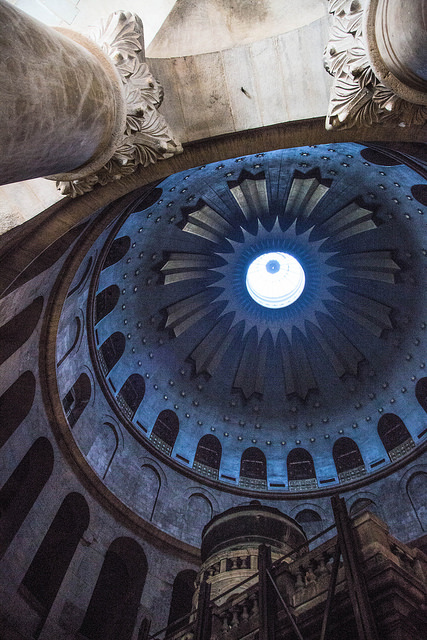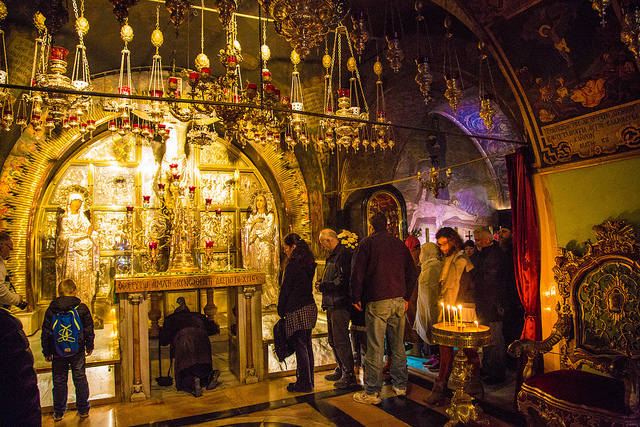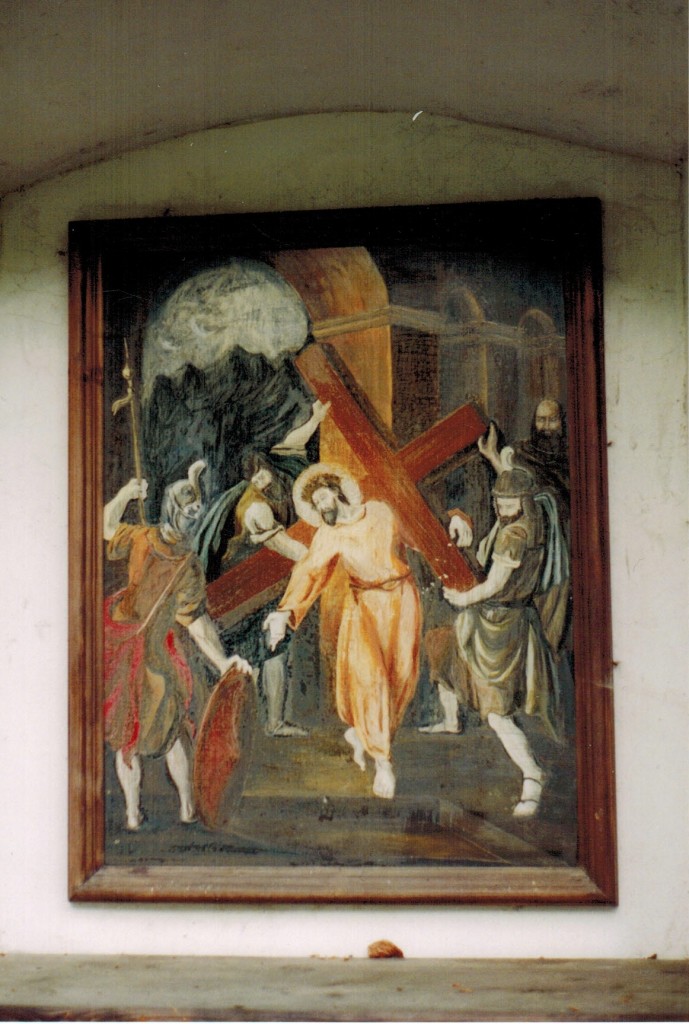Not long ago, my older brother Josh walked the via crucis in Jerusalem. He described it as both fascinating and moving, and he admitted that he missed some of the best photo ops because he was so moved by the thought: Jesus stood in this place. Jesus touched this rock. Jesus died for me—right here.

So it has been since at least the 4th Century: Christians have gone on pilgrimage to the Holy Land to revitalize their faith and pay homage to God made man.
And since the 13th Century or so, pilgrims to the Holy Land have been met by the Franciscan Friars. How that came to be is quite the tale. St. Francis of Assisi got the notion into his head that he should go to convert the Muslims, and so off he went to meet the Sultan. The Sultan could have lifted his head from his shoulders for crossing battle lines, but he was struck by this courageous and sincere Christian, unlike any other he had met. The Sultan did not convert to Christianity, but he treated Francis kindly and let him go.
What’s more, the Franciscans soon had permission to stay in Palestine and take care of western pilgrims to the Holy Land.

The Friars came to Jerusalem, and as this and that friar returned to the west he brought with him a great devotion to the holy sites. So the custom arose of building outdoor, full-scale replicas of the key area around the via crucis—it’s a small area, not more than a third of a mile in length. Across Europe there popped up what we would call outdoor stations of the cross.


When I lived in Austria, there was a hill outside our little village of Gaming called the Kalverienberg, “Calvary Mountain.” On a path winding up the hillside were outdoor stations of the cross—I don’t know when they were erected. At the very top of the hill was a dramatic, more-than-life-sized representation of the crucifixion scene in statues.
Eventually, the Franciscans obtained permission from the Pope to put smaller stations of the cross inside their churches and chapels. Later, this permission was extended to all Catholic churches. And so it is today that you typically find these bas relief stations in churches wherever you go—all thanks to the Franciscans!

A Franciscan saint named Leonard of Port Maurice did more than anyone else to spread the stations of the cross, erecting more than 500 stations in his lifetime. St. Alphonsus Liguori, an admirer of St. Leonard’s, wrote the text of the stations most commonly used today. But there are lots and lots of variations, of course.
One of my favorite variants is the Eucharistic stations of the cross by Peter Julian Eymard. Despite their 19th century French flavor, I find them strangely moving.

